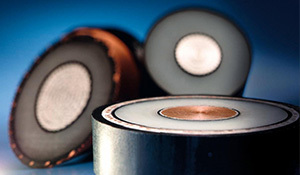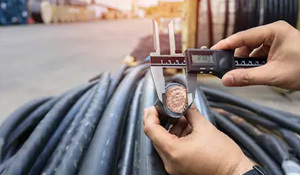Insulation strength testing methods for insulated wires and cables
Publication Time:
2020-01-06
The insulation strength of wires and cables refers to the ability of insulation structures and insulating materials to withstand the action of electric fields without breakdown failure, in order to check the quality of wire and cable products and ensure their safe operation.
The insulation strength of wires and cables refers to the ability of the insulation structure and insulation materials to withstand electric fields without breakdown. To check the quality of wire and cable products and ensure safe operation, all types of insulated wires and cables generally undergo insulation strength tests. Insulation strength tests can be divided into withstand voltage tests and breakdown tests.
The withstand voltage test involves applying a certain voltage to the sample under specific conditions, and after a certain period, judging whether the sample is qualified based on whether breakdown occurs. The applied voltage is generally higher than the rated operating voltage of the sample. Specific voltage values and withstand times are specified in product standards. Through the withstand voltage test, the reliability of the product's operation under working voltage can be tested, serious insulation defects can be found, and some shortcomings in the production process can also be discovered, such as: severe external damage to the insulation, severe defects on the conductor that cause rapid distortion of the electric field; penetrating defects or large conductive impurities in the insulation during production, etc.
The breakdown test involves increasing the voltage under certain test conditions until the sample breaks down, and then measuring the breakdown field strength or breakdown voltage. The breakdown test can assess the safety margin between the cable's voltage withstand capability and its operating voltage. Breakdown field strength is one of the important parameters in cable design.
Cables generally operate under AC voltage, but in DC transmission systems and certain special occasions, they also withstand DC voltage. High-voltage cables may also be subjected to atmospheric overvoltage (lightning) and operating overvoltage. Therefore, according to the different waveforms of the test voltage, insulation strength tests can be divided into three types: 1. AC (power frequency) voltage, 2. DC voltage, and 3. Impulse voltage.
Partial Discharge Measurement
For oil-filled cables, there is basically no partial discharge; even if oil-paper cables have partial discharge, it is usually very weak, such as a few PC, so these cables may not require partial discharge measurement during factory tests. For extruded cables, not only is the possibility of partial discharge high, but partial discharge also causes relatively serious damage to plastics and rubber. As the voltage level increases and the operating field strength increases, this problem becomes even more serious. Therefore, partial discharge measurement is required for high-voltage extruded cables during factory tests.
There are many methods for measuring partial discharge. One can measure discharge pulses based on the instantaneous charge exchange generated by the discharge (electrical measurement method); one can also measure the voltage of the ultrasonic waves generated during discharge (acoustic measurement method); furthermore, one can measure the intensity of light generated by the discharge (optical measurement method). For cables, the electrical measurement method is basically adopted.
Aging and Stability Tests
Aging test is a stability test to determine whether performance can be maintained stably under stress (mechanical, electrical, thermal).
Thermal Aging Test
A simple thermal aging test evaluates the aging characteristics of a sample under the effect of heat. The sample is placed in an environment with a temperature higher than its rated operating temperature by a certain value. After a specified period, changes in certain sensitive properties before and after aging are measured to assess the aging characteristics. Alternatively, accelerated aging can be achieved by increasing the temperature, combined with other stresses like moisture, vibration, and electric fields (thermal, mechanical, electrical stresses) to form an aging cycle. After each aging cycle, certain selected sensitive performance parameters are measured until the performance drops to the recognized lifetime value. This way, a shorter lifetime L (sample heating time) is obtained at a higher temperature T.
Thermal Stability Test
The thermal stability test involves heating the cable with current while also subjecting it to a certain voltage. After a certain period of heating, certain sensitive performance parameters are measured to evaluate the insulation's stability.
Insulation stability tests are divided into two types: long-term stability tests or short-term accelerated aging tests.
Previous Page
Previous Page:
Recommended News
2024 Social Responsibility Report
2025-03-31
2023 Social Responsibility Report
2024-11-17
2022 Social Responsibility Report
2024-11-17
Youhui Cable Co., Ltd.
Service Hotline:
Email:
youhuixianlan@yeah.net
Production Base:
Jiajiakou Township, Huang'erying Village, Tai'an Road, Jia 6, Ningjin County, Hebei Province












